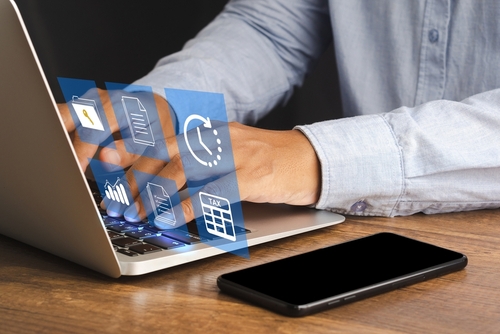Table of Contents
Updated by 11.27.2023
Attention Municipal Governments: Time to Introduce Digital Payment Options
Federal government entities like the Internal Revenue Service (IRS), along with many state governments, have made the move to accepting digital payments as an alternative to checks and in some instances, cash. Municipal governments appear to be slower to follow suit, but there’s a strong case for them to step up to the digital payments plate.

Consumers Crave Digital Payment Options
Consumers’ increasing affinity for digital payments tops the list of reasons it makes sense for municipal governments to give citizens digital means of handling tax payments and other fees. Findings of a study conducted by Logica Research and PayPal, which included 2,000 Americans aged 18 to 75 who had completed a government payment in the past 12 months, make this perfectly clear.
For starters, 93 percent of participants in the study believe all government entities should offer online payment options, while 88 percent said they would use such options if they were available. Similarly, 82 percent of consumers queried agreed that “paying all government taxes and bills online” would make their life easier, and 67 percent said digital payment methods would reduce worry about payments being lost in the mail. More than half (59%) said paying bills digitally would give them confidence that payments are being made accurately and on time, and 45 percent noted that avoiding a trip to a government office would give them more time in their day.
What’s more, the research indicates that consumers “see benefits for their communities” when payments are handled digitally rather than in paper-based mode. Specifically, 78 percent of individuals who completed the study said digital payments help local government entities become more efficient.
Equally telling, survey results prove that Americans wish to make more miscellaneous government payments with mobile wallets, and fewer payments with cash and checks. For example, study participants claimed they would make 3.5 times more park and recreational facilities usage fees with digital wallets, if that were an option, along with three times as many payments of court fines and tickets.
Benefits for Municipalities
Municipal governments, too, reap benefits when they accept digital payments. Increased efficiencies and a lower volume of late or missing payments not to mention checks returned for insufficient funds are among such advantages. In fact, 69% of participants in the Logica Research/PayPal study said they would be more than likely to pay their government bills as soon as possible if they could pay digitally rather than with a check or cash.
Moreover, digital payment options reduce municipalities’ labor costs and conserve human resources. Fewer employees are needed to physically accept and process checks and cash.
Getting Digital Municipal Payments Right
Municipal governments can best capitalize on the appeal and overall advantages of providing digital payment options when they follow a few best practices:
- Offer more than one way to pay. Not all citizens will want to use the same digital payment method. Ideally, municipal governments’ digital menus should include ACH, mobile, and web-based payment options. Accepting payments via an interactive voice response (IVR) system is also a good idea.
- Keep citizens informed. Publicize the availability of digital payment options as they become available, using social media channels, local news outlets, and bill inserts (if applicable) to get the word out. Educate citizens about how they work and what makes them appealing.
- Emphasize security. Some citizens are a bit hesitant to trade paper-based municipal payments for digital ones because of security concerns. Sharing basic information about how payments are secured through encryption and other means can counteract this hesitancy.
E-Complish offers a variety of payment solutions that are appropriate for municipal governments. Schedule a consultation to learn more about it.
Table of Contents

